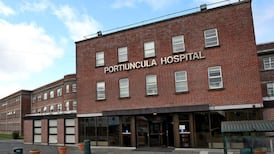The HSE has purchased and distributed almost 50,000 crack pipes since 2016, as the number of people using the drug in Ireland continues to rise.
Health services began distributing crack pipes several years ago as part of the Government’s “harm reduction strategy” outlined in the National Drug and Alcohol Strategy.
The sterile glass pipes are distributed by the HSE and local drug treatment agencies to prevent crack cocaine users from engaging in risky behaviours such as sharing pipes or making their own.
Like needle-sharing, sharing of crack pipes increases the risk of disease transmission, particularly hepatitis C.
According to figures released to The Irish Times, the HSE Addiction Service has purchased and distributed 49,021 pipes since 2016 at a cost of €65,000, or €1.30 per pipe.
These were distributed in Dublin, Limerick and Galway where the rate of crack use has been a matter of increasing concern. The figure does not include pipes distributed by local drug agencies.
In 2016, 3,414 crack pipes were distributed to users. By 2020 this had risen to 12,882, a 277 per cent increase.
This is in contrast to the number of sterile needles distributed by the HSE for heroin use, which has remained broadly stable in recent years. Since 2016, it has distributed just under three million needles at a cost of about €800,000, the figures show.
Treatment
As well as preventing the spread of disease, distributing sterile drug paraphernalia is an effective way of reaching drug users and offering them appropriate treatment, said Dr Eamon Keenan, the national clinical lead for the HSE Addiction Services.
Although sterile needle distribution continues to dwarf the distribution of crack pipes, recent evidence suggests the crack problem has been worsening dramatically.
The number of people treated for crack cocaine use increased by 44 per cent between 2018 and 2019, according to the report from the Health Research Board (HRB) released last July. It called the increase a "worrying trend".
Crack is a smokable form of cocaine which produces a much stronger but shorter-lasting high than its parent drug. This is typically followed by an intense craving for more, and addiction can set in rapidly.
It is typically smoked in a glass pipe or a homemade tube made out of a plastic bottle and is usually much cheaper than cocaine, retailing for as little as €15 a dose.
The increase in the use of crack is likely linked to the increased availability of cocaine, from which it is made.
Garda sources say cocaine use in Ireland in recent years has surpassed Celtic Tiger levels. The Garda National Drugs and Organised Crime Bureau seized a record amount of drugs in 2020, including 209kg of cocaine, valued at €14.6 million. The number of people being treated for cocaine addiction has tripled since 2013.








